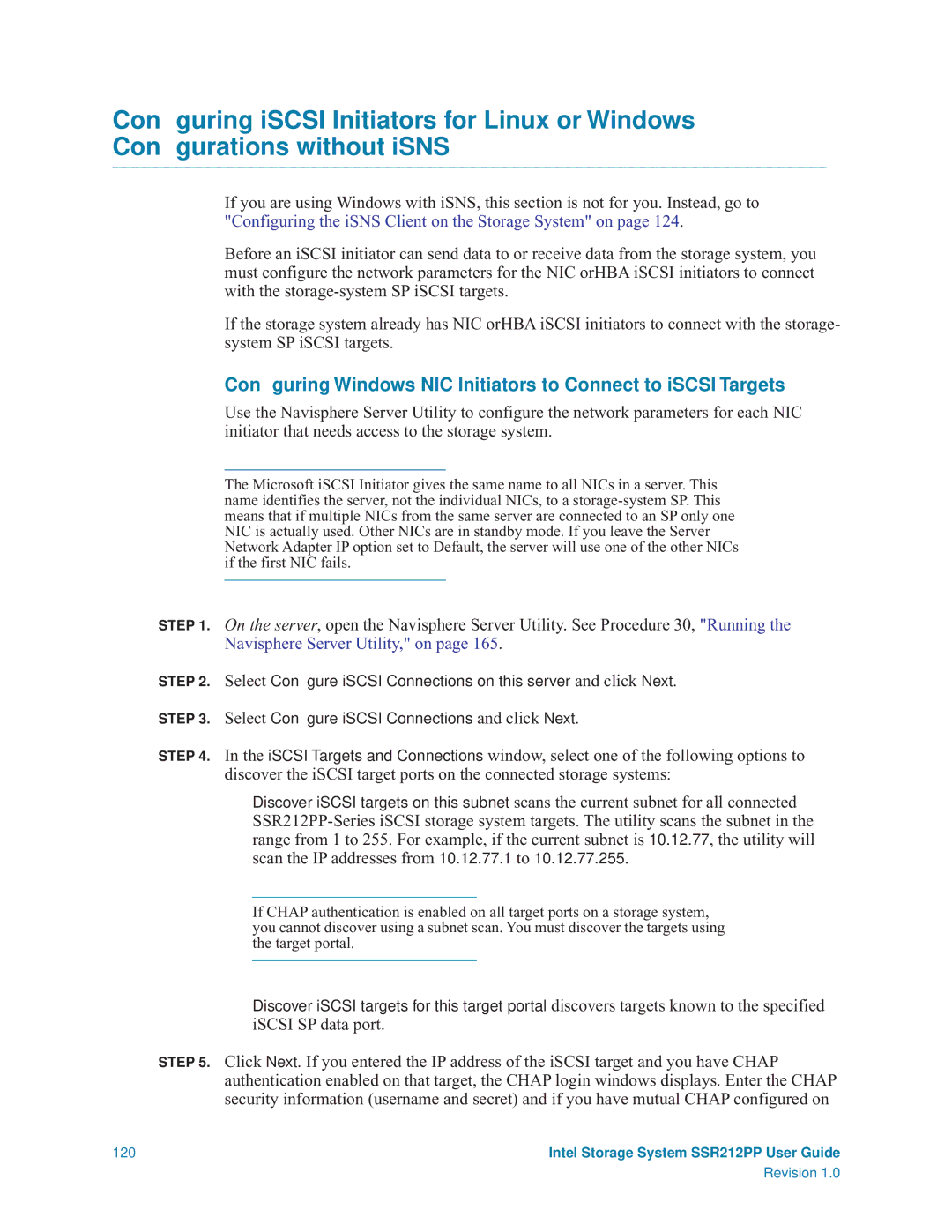
Configuring iSCSI Initiators for Linux or Windows Configurations without iSNS
If you are using Windows with iSNS, this section is not for you. Instead, go to "Configuring the iSNS Client on the Storage System" on page 124.
Before an iSCSI initiator can send data to or receive data from the storage system, you must configure the network parameters for the NIC orHBA iSCSI initiators to connect with the
If the storage system already has NIC orHBA iSCSI initiators to connect with the storage- system SP iSCSI targets.
Configuring Windows NIC Initiators to Connect to iSCSI Targets
Use the Navisphere Server Utility to configure the network parameters for each NIC initiator that needs access to the storage system.
The Microsoft iSCSI Initiator gives the same name to all NICs in a server. This name identifies the server, not the individual NICs, to a
STEP 1. On the server, open the Navisphere Server Utility. See Procedure 30, "Running the Navisphere Server Utility," on page 165.
STEP 2. Select Configure iSCSI Connections on this server and click Next.
STEP 3. Select Configure iSCSI Connections and click Next.
STEP 4. In the iSCSI Targets and Connections window, select one of the following options to discover the iSCSI target ports on the connected storage systems:
Discover iSCSI targets on this subnet scans the current subnet for all connected
If CHAP authentication is enabled on all target ports on a storage system, you cannot discover using a subnet scan. You must discover the targets using the target portal.
Discover iSCSI targets for this target portal discovers targets known to the specified iSCSI SP data port.
STEP 5. Click Next. If you entered the IP address of the iSCSI target and you have CHAP authentication enabled on that target, the CHAP login windows displays. Enter the CHAP security information (username and secret) and if you have mutual CHAP configured on
120 | Intel Storage System SSR212PP User Guide |
| Revision 1.0 |
